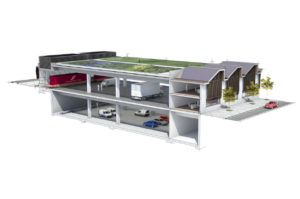The field of city logistics can be characterised by its many local demonstrations and trials, that are quite often not lasting longer than the trial period. The number of demonstrations that continued and were implemented in daily practice is limited. Freight partnerships proved to be a good first step to engage stakeholders.
This new research paper by Hans Quak and Nina Nesterova proposes a way to develop a more action-driven form of these partnerships that follows from a solution approach, which has proved successful worldwide in fostering innovation deployment, but has not yet been applied explicitly in the domain of City Logistics: Living Labs.
Living labs
The living lab approach ensures that the stakeholders are involved much earlier in the in planning and implementation processes, and that the proposed city logistics implementation is revised and continuously improved to meet stakeholder needs and obtain maximum impact for a long time. This paper summarises the steps that have to be taken to set-up and work in a city logistics living lab (CLLL).
A CLLL can be defined as a dynamic test environment where complex city logistics innovations can be implemented, following a cyclical approach, where several solutions can be experimented and re-adjusted or improved to fit the real-life city challenges.
Project Citylab
In the Horizon 2020 project CITYLAB, the researchers developed practical guidelines for establishing and running a city logistics living lab based on several living lab- and field test methodologies that enables stakeholders to set-up and run a CLLL. This paper discusses the most important CLLL phases, roles, and characteristics, as well as the tools that are available. Next, this contribution shows the first results of cities in which CLLLs are actually set up, or already running.
A City Logistics Living Lab: A Methodological Approach. Available from: https://www.researchgate.net/publication/310786934_A_City_Logistics_Living_Lab_A_Methodological_Approach

